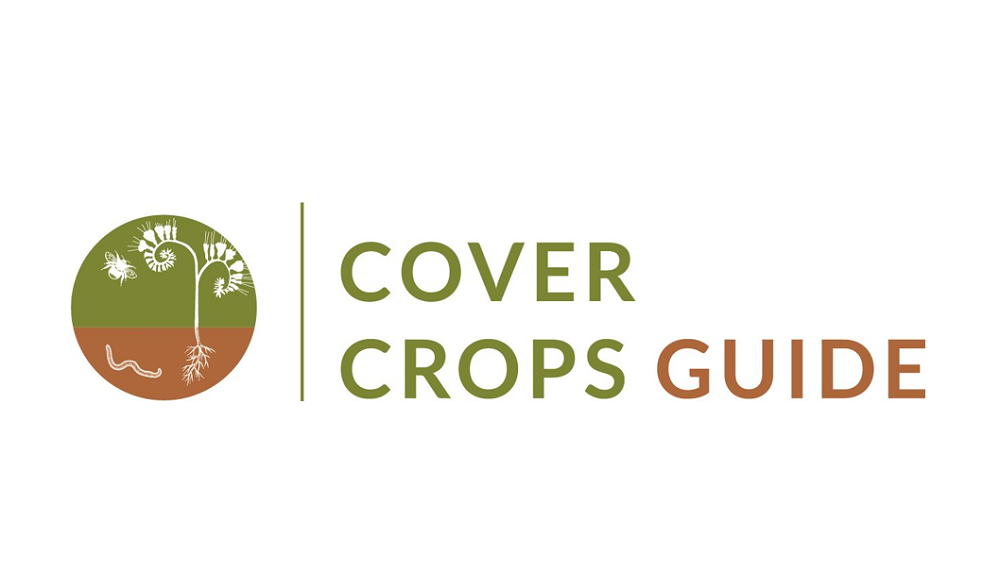How Strategic Cereal Farms evaluate cover crops
Friday, 22 December 2023
There is a vast amount of information about cover crops, companion crops and living mulches. However, making sense of it in practice can be a challenge. This is why our Strategic Cereal Farms are learning how to make such options work for their businesses.
In this blog, Joe Martlew, AHDB Senior Knowledge Transfer Manager, provides a flavour of the fascinating programme of work across the network that aims to help farmers get to grips with cover crops.
During November 2023, four Tuesday webinars highlighted the latest Strategic Cereal Farm results. This blog is based on the third of these webinars (which is available on YouTube).
Nitrate losses
Nathan Morris (NIAB) and Brian Barker (the first Strategic Cereal Farm East host) presented the final set of results from on-farm trials with cover crops.
As with any cover crop, it is important to define the farm’s objective to guide species choice and management. At this farm, the aim was to reduce nitrate (and pesticide) losses to drainage water.
Split-field experiments, conducted over several harvest years (2018–22), examined the effect of cover crops (oil radish and rye) compared to over-winter stubble and ploughed bare ground. The on-farm trials also compared cultivation approaches, measuring the differences between ploughing and a one-pass system.
Based on field drain water samples and drain flow rate estimations, Nathan revealed that average losses (across the experiment) were between 0.1 and 0.8 kg of nitrogen per day. Reflecting on the extremes in these trials, the equivalent cash losses ranged from £0.20 to £3.70 per day (based on ammonium nitrate at £2.00 nitrogen per kg). Although rough estimates, it illustrates the potential costs to the farm associated with nitrate losses.
Cover crops, grass leys, winter oilseed rape and winter barley reduced nitrate losses to drain flow by up to 50%, compared to stubble. The trials clearly showed the value of keeping the soil covered with living crops. However, Nathan acknowledged the uncertainty associated with the release of nitrogen taken up by cover crops.
The trials also found a strong relationship between cultivation and nitrate loss – lower-disturbance, one-pass cultivations (direct drilling and strip tillage) reduced nitrates in drainage water by 55–66% compared with ploughing.
Biodiversity benefits
Fiona Burnett (SRUC) and David Aglen (Strategic Cereal Farm Scotland host) provided an update on work that examines how cover crop management impacts soil health, biodiversity and the establishment of a cash crop (spring barley).
The use of cover crops for four years has led to some minor improvements to soil health, as well as increases in the water-retaining ability of the soil.
When cover crops were kept alive as long as possible into the spring, the team recorded a positive impact on beneficial insects, such as some species of ground beetles and spiders.
Generally, different timings of cover crop destruction only had a small effect on the spring barley (drilling date of the cash crop was the key yield driver). The exception was a negative effect associated with drilling spring barley into a living cover crop (which was documented each season). Due to the consistently poor performance of this treatment, it was removed from trials. Instead, the impact of grazing cover crops with sheep will be evaluated in 2024.
Regenerative results
Elizabeth Stockdale (NIAB) and David Miller (Strategic Cereal Farm South) gave an update on experiments with cover crops in the farm’s extensive regenerative systems.
NIAB, alongside South East Water and the Farming & Wildlife Advisory Group (FWAG), has used various cover crops at the farm (since 2020) to study changes to soil health, beneficial organisms, nitrate movement and crop performance.
With similar results to the Strategic Cereal Farm East trials, overwinter cover crops consistently reduced peak nitrate concentration in the soil during autumn compared to stubble alone. Buckwheat-containing mixes performed consistently, although only slightly better than the others tested.
The team also examined above- and below-ground growth closely and noticed an ‘iceberg’ effect – mixes associated with relatively small amounts of biomass above the soil (such as the oat, radish, clover and vetch mix), concealed the largest root biomasses. This compares to an oat and mustard mix, which had a relatively large above-ground biomass.
Once again, the result demonstrates the importance of knowing the farm’s objective to select the best species to match the challenge.
Irrespective of the root biomass, all cover crop treatments improved soil structure, compared to bare stubble treatments, according to a visual evaluation of soil structure (VESS).
Cover crops were also associated with an increase in worm numbers and beneficial organisms. The team felt these positive increases outweighed the negatives associated with a slight increase in slug populations.
In these trials, there was no evidence of any effect on the following cash crops. This is not a disappointing result. With no negative impacts on crop establishment, yield and grain quality, the farm is gaining the soil-health benefits of incorporating cover crops into the rotation.
Key takeaways
- Cover crops can provide benefits to soil health and biodiversity without compromising cash-crop performance
- Cover crops (along with appropriate cultivations choice) can reduce nitrate leaching
- Establishing cover crops early and destroying them early appear to be best for spring-crop performance – however, retaining cover crops for longer in the spring boosted beneficials
Further information
Species selection tool
Check out the Cover Crops Guide species selection tool to assess the suitability of brassica, legume, cereal and other cover crop varieties.
Each species is profiled for its winter hardiness, rooting depth, grazing potential, and nitrogen-fixing and nutrient-storing qualities.
The tool also includes information on sowing period and depth, and seed size and seed rate.
 Cover Crops Guide
Cover Crops Guide


